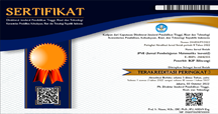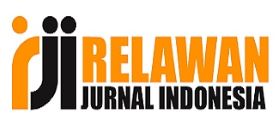IDENTIFIKASI HAMBATAN BELAJAR SISWA PADA KONSEP PERSAMAAN KUADRAT
DOI:
https://doi.org/10.22460/jpmi.v4i4.p%25pKeywords:
Learning Obstacle, Learning Trajectory, Quadratic EquationAbstract
References
Bossé, M. J., & Nandakumar, N. R. (2005). The factorability of quadratics: Motivation for more techniques. Teaching Mathematics and Its Applications, 24(4), 143–153. https://doi.org/10.1093/teamat/hrh018
Brousseau, G. (2002). Theory of Didactical Situations in Mathematics. In Theory of Didactical Situations in Mathematics. https://doi.org/10.1007/0-306-47211-2
Carraher, D. W., Schliemann, A. D., Brizuela, B. M., & Earnest, D. (2006). Arithmetic and algebra in early mathematics education. Journal for Research in Mathematics Education, 37(2), 87–115. https://doi.org/10.2307/30034843
Didis, M. Gozde; Bas, Sinem; Erbas, A. K. (2011). Students’ Reasoning in Quadratic Equations with One Unknown. The Seventh Congress of the European Society for Research in Mathematics Education, 17(24), 11.
Didis, M. G., & Erbas, A. K. (2015). Performance and difficulties of students in formulating and solving quadratic equations with one unknown. Kuram ve Uygulamada Egitim Bilimleri, 15(4), 1137–1150. https://doi.org/10.12738/estp.2015.4.2743
French, D. (2002). Teaching and learning algebra. In Teaching Secondary School Mathematics (pp. 199–226). https://doi.org/10.4324/9781003117810-11
Kotsopoulos, D. (2007). Unravelling Student Challenges with Quadratics: A Cognitive Approach. Australian Mathematics Teacher, 63(2), 19–24.
Maudy, S. Y., Suryadi, D., & Mulyana, E. (2017). Contextualizing symbol, symbolizing context. AIP Conference Proceedings, 1868(August). https://doi.org/10.1063/1.4995156
Moleong, L. J. (2010). Metodologi Penelitian Kualitatif. PT Remaja Rosdakarya.
Sugiyono. (2008). Metode Penelitian Kuantitatif, Kualitatif, dan R&D. Alfabeta.
Suryadi, D. (2019). Landasan Filosofis: Penelitian Desain Didaktis (DDR).
Wheeler, D. (1996). Backwards and forwards: Reflections on different approaches to algebra. In Approaches to algebra (pp. 317-325). Springer, Dordrecht.
Zakaria, E., --, I., & Maat, S. M. (2010). Analysis of Students’ Error in Learning of Quadratic Equations. International Education Studies, 3(3), 105–110. https://doi.org/10.5539/ies.v3n3p105

















